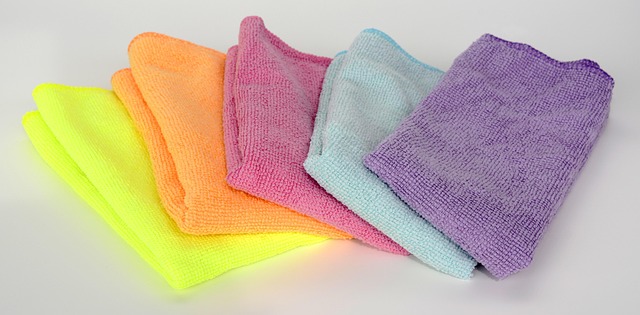Mold thrives in damp, dark places and can cause health issues. DIY mold removal is cost-effective using natural agents like vinegar, baking soda, and essential oils. These solutions scrub away mold, inhibit growth, and break down spores. Proper application, addressing moisture sources, and complete drying prevent future infestations. Results vary based on severity; professional help is recommended for severe cases.
Are you tired of dealing with unsightly and potentially harmful mold in your home? Discover the power of DIY mold removal solutions! This comprehensive guide explores whether homemade mold removers truly live up to the hype. From understanding mold growth’s dangers to unearthing effective ingredients and application techniques, we empower you with knowledge. Learn about the benefits, precautions, and limitations, enabling informed decisions for a cleaner, safer living space.
- Understanding Mold Growth and Its Dangers
- Benefits of DIY Mold Removal Solutions
- Common Ingredients for Homemade Removers
- Effective Application Techniques for Home Use
- Precautions and Limitations: What to Expect
Understanding Mold Growth and Its Dangers

Mold thrives in damp, dark environments, making it a common issue in homes, especially in areas like bathrooms and kitchens. It can grow on various surfaces, including walls, ceilings, and even behind drywall. Understanding mold growth is crucial when considering DIY mold removal. Mold spores are microscopic and easily dispersed, allowing them to spread quickly and often go unnoticed until significant damage has occurred.
Exposure to mold can pose serious health risks, particularly for individuals with respiratory conditions or a weakened immune system. Common symptoms include allergies, coughing, and respiratory distress. That’s why addressing mold issues promptly is essential. Many people opt for DIY solutions due to cost-effectiveness and convenience, but effectively removing mold and preventing its return requires careful consideration of safety measures and the right tools, such as natural cleaning agents and proper ventilation.
Benefits of DIY Mold Removal Solutions

DIY mold removal solutions offer a range of benefits that make them an attractive and appealing option for many homeowners. One of the primary advantages is cost-effectiveness. Commercial mold removal products can be expensive, especially for extensive mold infestations. By creating your own DIY solution, you can save significant money while still achieving effective results.
Additionally, DIY mold removal allows for greater control over the ingredients used. Many commercial products contain harsh chemicals that may pose health risks or damage surfaces. Homemade remedies, on the other hand, often utilize natural and safer alternatives like vinegar, baking soda, and essential oils. This makes them a more environmentally friendly and non-toxic option, ensuring a healthier living space for you and your family.
Common Ingredients for Homemade Removers

Many DIY enthusiasts turn to homemade mold removers due to their effectiveness and cost-efficiency. Common ingredients include baking soda, vinegar, hydrogen peroxide, and essential oils like tea tree oil or lemon eucalyptus. Baking soda acts as a natural abrasive, helping to scrub away mold while vinegar’s acidity creates an environment that inhibits mold growth. Hydrogen peroxide is a powerful oxidizer that breaks down mold spores, and essential oils offer added benefits by repelling future mold development.
These simple, natural compounds often yield impressive results, especially when combined. For instance, a mixture of equal parts baking soda and vinegar can create a potent cleaning solution. Additionally, adding a few drops of essential oil to water can enhance the cleaning power and leave a fresh scent. With these easy-to-find ingredients, DIY mold removal offers a safe and eco-friendly alternative to commercial products on the market.
Effective Application Techniques for Home Use

When employing DIY mold removal techniques, proper application is key to achieving effective results. Start by identifying and addressing the source of moisture, as this is where mold thrives. Inspect your home for areas of high humidity, such as bathrooms, kitchens, and basements, and ensure these spaces are well-ventilated. For visible mold growth, create a solution of equal parts water and white vinegar or a commercial mold remover recommended for household use. Apply the solution to the affected area using a spray bottle or cloth, making sure to cover the mold thoroughly. Allow it to sit for several minutes to soften and dissolve the mold, then scrub gently with a brush or sponge before rinsing clean with water.
For hard-to-reach areas or non-porous surfaces like countertops, consider a baking soda paste mixed with a small amount of water. This gentle abrasive can help scrape away mold while also neutralizing odors. Always wear protective gear, including gloves, goggles, and a mask, during the cleaning process to avoid inhalation of mold spores. After removing visible mold, dry the area completely and address any underlying moisture issues to prevent future growth. Regular monitoring and quick action will help maintain a mold-free environment in your home using simple, effective DIY mold removal techniques.
Precautions and Limitations: What to Expect

When trying any DIY mold removal method, including homemade solutions, it’s crucial to understand the precautions and limitations involved. While these natural alternatives can be effective for minor mold issues, they may not address larger or deeply embedded problems. Results can vary greatly depending on the type of mold, its severity, and the surface affected.
Always wear protective gear, such as gloves, masks, and goggles, to minimize exposure to mold spores during application. Keep in mind that homemade remedies might not provide the same level of cleanliness and sterility as commercial products, leaving behind potential allergens or irritants. In cases of severe mold infestation or if the area is hard-to-reach, professional intervention is advised for thorough and safe removal.
